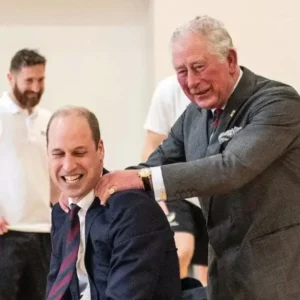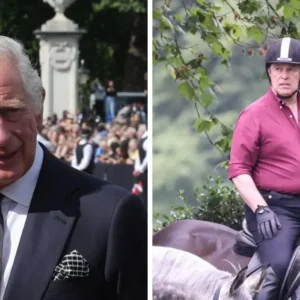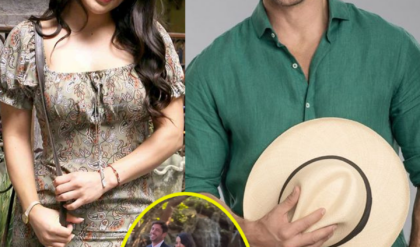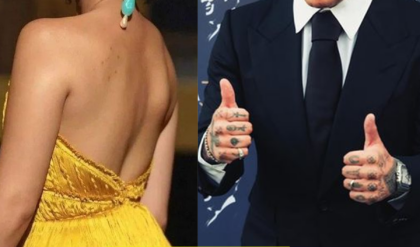In a surprising twist of fate, “The View” has hit rock bottom, marking the lowest ratings in television history after featuring the acclaimed actor Robert De Niro. Once a staple of daytime television, “The View” has seen a significant drop in viewership, sparking conversations about the show’s current relevance and the impact of its guest choices.
“The View,” which premiered in 1997, was once a pioneer in the daytime talk show genre. Created by broadcast legend Barbara Walters, the show aimed to present a diverse panel of women discussing “hot topics” of the day. It quickly became a platform for lively debates and candid conversations, attracting a loyal audience. However, recent years have not been kind to the show. With a revolving door of co-hosts, controversies, and an increasingly polarized political landscape, “The View” has struggled to maintain its once-dominant position.
Robert De Niro’s appearance on “The View” was heavily promoted by the show’s producers. Known for his outspoken political views, especially his criticism of former President Donald Trump, De Niro’s visit was expected to draw in viewers eager to hear his thoughts on the current state of the nation. However, the outcome was far from what the producers had anticipated.
De Niro’s segment, instead of boosting ratings, seemed to have had the opposite effect. Viewers took to social media to express their dissatisfaction with the episode. Some felt that the actor’s presence overshadowed the show’s regular format, while others were put off by the political discourse that dominated the conversation.

The backlash was immediate and intense. Social media platforms were flooded with negative comments, many of which criticized the show’s reliance on polarizing figures to boost ratings. “The View” has always thrived on controversy and debate, but it seems this time they pushed the envelope too far.
For “The View,” this ratings disaster could serve as a wake-up call. The show must reassess its strategy and find a way to reconnect with its audience. This might involve returning to its roots, focusing on a broader range of topics, and featuring guests who represent a wider spectrum of opinions.
Moreover, “The View” could benefit from stabilizing its co-host lineup. Frequent changes have left viewers feeling disconnected from the show’s core dynamic. A consistent panel could help rebuild the trust and loyalty of its audience.
As for Robert De Niro, the actor remains unphased by the controversy. Known for his forthrightness, De Niro has never shied away from expressing his opinions. However, his appearance on “The View” has sparked discussions about the role of celebrities in political discourse. While some viewers appreciate hearing from public figures who use their platform to advocate for change, others feel that entertainers should stay in their lane.
The fallout from De Niro’s appearance on “The View” highlights a broader issue in media today: the delicate balance between entertainment and political commentary. Shows like “The View” must navigate these waters carefully to avoid alienating their audience.
One lesson is clear: viewers crave authenticity and balance. They want to hear diverse opinions and engage in meaningful discussions without feeling bombarded by one-sided viewpoints. “The View” must find a way to provide this balance if it hopes to regain its lost viewership.
The plunge in ratings following Robert De Niro’s appearance on “The View” serves as a stark reminder of the challenges faced by modern talk shows. In an era of media saturation and political polarization, maintaining relevance and audience trust is more difficult than ever. For “The View,” this incident could either mark the beginning of the end or be a catalyst for much-needed change. Only time will tell if the show can adapt and reclaim its position as a leading voice in daytime television.
News
MEGHAN MARKLE’S LATEST EFFORT UNDER FIRE: IS IT JUST SELF-PROMOTION?
Meghan Markle’s newest venture is facing criticism long before production has even begun! “The problem is I sometimes think Meghan can’t let go and wants it to be about her…” royal expert Rupert Bell dished on the “Kinsey Schofield Unfiltered” podcast. SOURCE:…
‘GOOD KING HARRY’: PRINCESS DIANA FELT THAT FUTURE ROYAL TELL-ALL SCRIBE WOULD MAKE ‘A BETTER’ MONARCH THAN PRINCE WILLIAM
Diana, Princess of Wales, once nicknamed her youngest son “Good King Harry,” due to his “general gusto” compared to the real future monarch and his elder brother, Prince William. “William doesn’t want to be king and I worry about that,” royal author Angela Levin wrote in…
FORGING HER OWN PATH: LADY LOUISE WINDSOR TO AVOID ‘ROYAL BURDEN’ AS SHE FOCUSES ON UNIVERSITY LIFE
Lady Louise Windsor, 20, and 16th in line to the British throne has decided to create her own path in life after previously contemplating a life of service to the Crown. “I think it’s probably too early to tell,” GBN’s royal correspondent Cameron…
“Royal Restructure Stumbles: Princess Anne’s Injury Puts Strain on Slimmed-Down Monarchy”
Prince William has reportedly taken King Charles III’s “slimmed-down monarchy” initiative to the extreme. But as the next king readies to slim down the Crown even more than his dad, a “severe warning” has been issued by some royal analysts when it comes…
FORTUNE FAVORS THE BOLD: KING CHARLES TO UNLEASH MONEY-MAKING STREAM AT ROYAL LODGE ONCE HE KICKS PRINCE ANDREW OUT
King Charles III is reportedly set to start a rental money-making stream once he finally boots his younger brother, Prince Andrew, from the Royal Lodge near Windsor Castle. “Rental of £1million a year is not far-fetched for a house of that size…
Jemele Hill Unleashes Furious Rant Claiming Caitlin Clark Receives Different Treatment From Media Compared To Black Players
Jemele and Caitlin Clark (Photo by Leon Bennett/Getty Images) (Photo by Andy Lyons/Getty Images) Jemele Hill has a serious issue with Caitlin Clark, but it’s not from something she did or said, but from the media who covers her. Caitlin Clark, the…
End of content
No more pages to load











